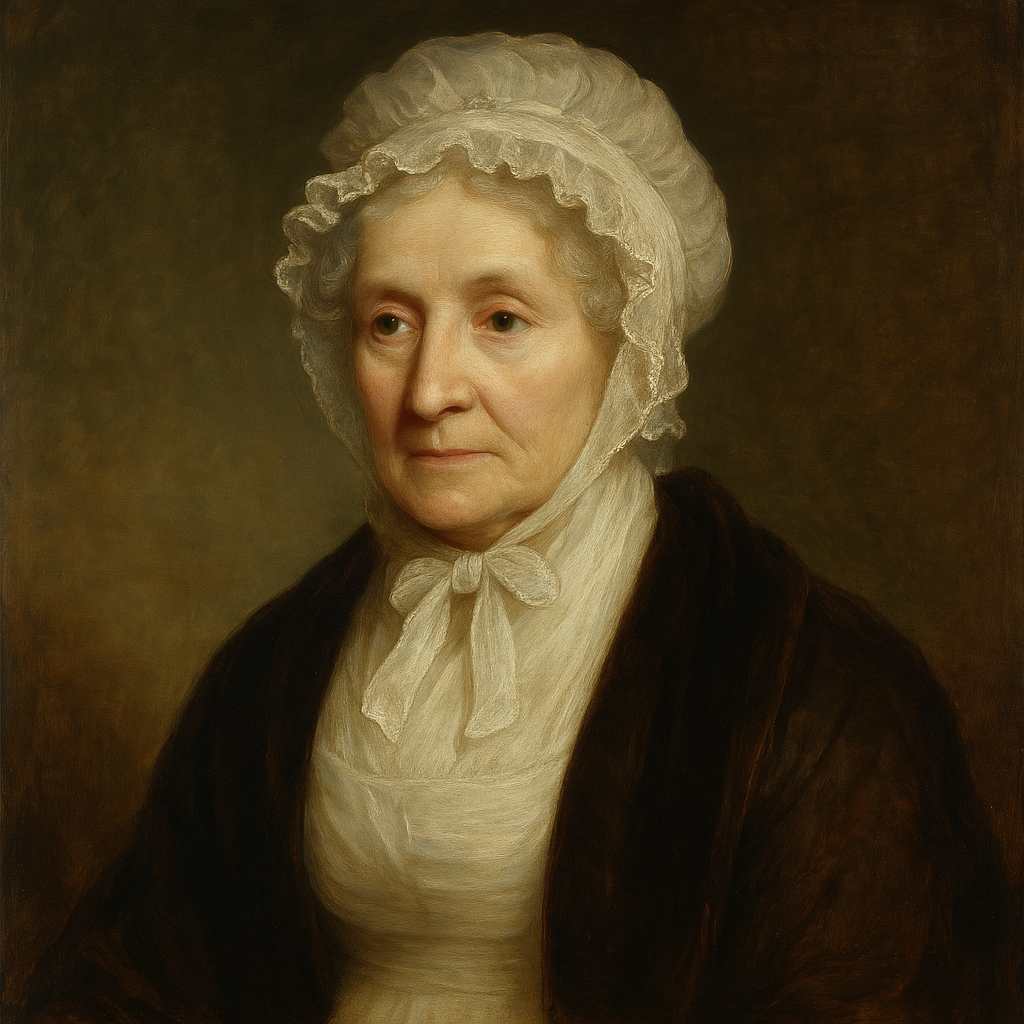1 Poems by Lady Nairne
1766 - 1845
Lady Nairne Biography
Carolina Oliphant, Lady Nairne, stands as one of Scotland's most significant yet often overlooked poets of the Romantic era, whose life (1766-1845) spanned a period of profound cultural and social transformation in Scottish society. Born at Gask House in Perthshire to a staunchly Jacobite family, her early years were shaped by the lingering shadows of the failed Stuart cause, which would later influence her literary output in profound ways.
The Oliphant family's Jacobite sympathies had led to their exile in France following the 1745 uprising, and though they had returned to Scotland by the time of Carolina's birth, the romantic ideals of the lost cause permeated her childhood. Named after Charles Edward Stuart (Bonnie Prince Charlie), Carolina grew up immersed in the oral traditions of Scottish folk music and poetry, absorbing the ballads and songs that would later inspire her own compositions.
Her early education reflected her privileged background, but it was the informal education she received through exposure to traditional Scottish culture that would prove most influential in her development as a poet. The family's domestic workers and local community members shared with her the rich repository of folk songs and tales, while her father's collection of Jacobite memorabilia and stories provided a romantic connection to Scotland's tumultuous past.
Lady Nairne's poetic output was marked by a fascinating duality: while she wrote extensively about Jacobite themes, she also composed numerous songs celebrating domestic life and Scottish rural traditions. Her work bridges the gap between the high Romantic style of her era and the traditional forms of Scottish folk poetry. What sets her apart from her contemporaries is her ability to inhabit multiple personas in her writing, crafting verses that could authentically capture the voices of common folk while maintaining literary sophistication.
Perhaps most intriguingly, Lady Nairne published her works anonymously, using various pseudonyms including "B.B." (Mrs. Bogan of Bogan) and "S.M." (Scottish Minstrel). This anonymity, maintained until after her death, wasn't merely a reflection of the period's social constraints on women writers but rather served as a deliberate artistic choice, allowing her to explore diverse voices and themes without the limitations of her aristocratic identity. Her insistence on anonymity was so strong that she would sometimes deny authorship of her own works when directly questioned.
Her marriage to Major William Murray Nairne in 1806 brought both personal happiness and a change in social status. The restoration of the Nairne peerage in 1824 made her Lady Nairne, though this elevated social position perhaps contributed to her continued desire for anonymity in her literary pursuits. The marriage also inspired some of her most touching domestic verses, while the death of her husband in 1830 led to some of her most poignant elegiac works.
Lady Nairne's contribution to Scottish literature extends beyond her original compositions. Her work in collecting and preserving traditional Scottish songs, often rewriting or "purifying" them for contemporary audiences, played a crucial role in maintaining Scotland's cultural heritage. Her revisions of traditional songs, while sometimes criticized by modern scholars for sanitizing authentic folk elements, were instrumental in keeping these cultural artifacts alive for future generations.
Among her most celebrated works are "The Land o' the Leal," often mistakenly attributed to Robert Burns, and "Will Ye No Come Back Again?" These songs demonstrate her masterful ability to blend personal emotion with national sentiment, creating works that resonate on both individual and collective levels. "The Laird o' Cockpen" showcases her skill with humor and social satire, while "The Auld House" presents a nuanced exploration of memory and tradition.
Her technical mastery of the Scots language deserves special attention. Unlike some of her contemporaries who used Scots as a literary affectation, Lady Nairne's use of the language demonstrates an intimate understanding of its nuances and emotional registers. Her command of both Scots and English allowed her to move seamlessly between languages, choosing the most appropriate voice for each piece.
The last years of her life were marked by extensive travel in continental Europe, particularly after the death of her only son in 1837. These years of exile echo the earlier Jacobite exile of her family, though now transformed through the lens of personal grief rather than political circumstance. The poetry from this period reflects a deepening spiritual focus, though never losing its connection to Scottish themes and forms.
Lady Nairne's legacy presents a complex case study in Scottish literary history. While her work was immensely popular during her lifetime (though published anonymously), her deliberate self-effacement has contributed to her relatively modest place in the canon compared to contemporaries like Burns. However, her sophisticated handling of traditional forms, her preservation of Scottish cultural heritage, and her careful navigation of class and gender expectations make her a fascinating figure for modern literary scholars.
The posthumous revelation of her identity in 1846 sparked a reevaluation of her work that continues to this day. Modern feminist criticism has found rich material in her strategic use of anonymity and her ability to construct various authorial personas, while Scottish cultural historians value her role in preserving and adapting traditional songs for modern audiences. Her work provides unique insights into the cultural transitions of late 18th and early 19th century Scotland, particularly the ways in which Jacobite sentiment was transformed from political reality to cultural memory.
This text was generated by AI and is for reference only. Learn more
Username Information
No username is open
Everything is free to use, but donations are always appreciated.
Quick Links
© 2024-2025 R.I.Chalmers (V2Melody).

All music on this site by R.I.Chalmers (V2Melody) is licensed under a Creative Commons Attribution-NonCommercial 4.0 International License.
Attribution Requirement:
When using this music, you must give appropriate credit by including the following statement (or equivalent) wherever the music is used or credited:
"Music by R.I.Chalmers (V2Melody) – https://v2melody.com"
Support My Work:
If you enjoy this music and would like to support future creations, your thanks are always welcome but never required.
Thanks!


